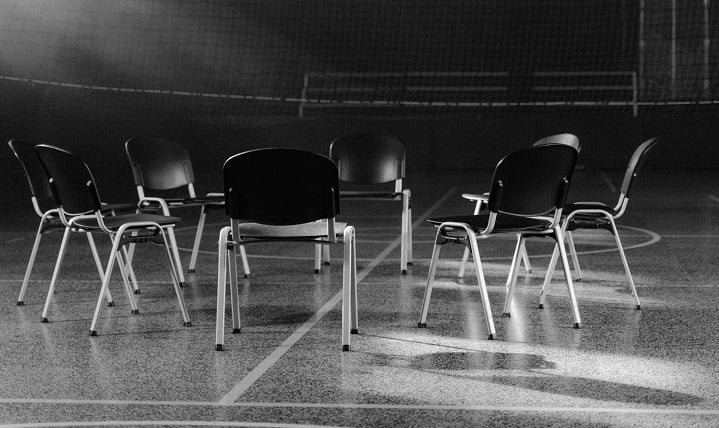Drug & Alcohol Rehab in Newham
Alcohol, illegal drugs, and prescription medication have taken Newham by storm; substances such as spice and heroin are having a dramatic impact on all age cohorts. [1]
According to Public Health England, between the years 2019 and 2020, there were over 968 new individuals in drug and alcohol treatment in Newham.
Of those statistics:
- 19% were adults who were living with children.
- 26% were parents not living with children.
- 55% were adults without children.
The estimated number of adults living with children in Newham, suffering from alcohol dependency is:
- 3 men in every 1,000, where 86% were not treated.
- 1 in every 1,000 women, where 75% were left untreated.
Regarding opiate dependency, the number of adults living with children was:
- 2 men in every 1,000 had an opioid dependency, where 71% are not treated.
- 1 woman in every 1,000 had an opioid dependency, where 64% were left untreated.
Over 1 in every 100,000 people in Newham die from morphine or heroin overdose. With the twelfth highest death rate in London, Hackney (2.73 in 100,000), Haringey (2.61 in 100,000), and Camden (2.06 in 100,000) seem to be the worst for heroine-related deaths. The national average in England is 1.7, and 2.3 in Wales.
The worsening of these statistics has been linked to social deprivation, such as:
- Unemployment
- Poor quality housing
- Poverty
- Low success rates for different treatments
The death rates of drug use increase as the area becomes more deprived. Widening inequalities also play a part in drug and alcohol misuse; whether that be from broken family bonds, mental health, lack of job availability, or poor community resources. [2]
There is a possibility that people find themselves to be stuck in a loop. Drug use leads to crime, crime leads to drug use and both link to social development.
Drug markets are not only economically destructive but hinder regeneration efforts where there are already limited job opportunities.
Deprivation causes addiction, and it increases the tendency of misuse and overdose. This affects life options, such as confidence, social skills and self-esteem, lack of trust (from lying), family bonds, and other life advances in Newham.
There are other causes of drug use, such as:
- Genetic vulnerability
- Psychosocial experiences
- Trauma
- Environmental influence
- Mental health
Start your long-term recovery journey today by calling our expert team on 0800 088 66 86
Dual Diagnosis: Mental Health

Addiction is a symptom of bad mental health, and bad mental health is a symptom of addiction. Substance abuse and mental health occur at the same time, where depression and anxiety are the most common side effects and causes of drug use.
When two disorders, such as substance abuse and mental health occur in the same person, this is called comorbidity [3].
Those who develop substance use disorders, also known as SUDs, are more likely to be diagnosed with bad mental health. [4] This is most obvious in young adults; over 60% of adolescents in SUD treatment programs in Newham further meet the criteria for mental illness [5].
It’s primarily known that substances such as marijuana can cause psychotic reactions, whilst alcohol is a depressant, making anxiety and depression worse. Research indicates that over 43% of people in treatment for SUDs already have a diagnosis of a mental health disorder, specifically depression or/and anxiety. [6]
Co-morbidity can be seen amongst youths, but most specifically from the transition between adulthood (18-25 years old). People find more freedom, opportunities, risks, and often use drugs or alcohol in Newham to navigate stresses such as work and relationships. [7]
At this age, the brain is still developing; decision-making and impulse control are some of the last functions to mature. This dramatically enhances vulnerability to drug use, alcoholism and crime. If drugs and alcohol are used early on in life, this increases the chances of developing a SUD. [8]
It is also true, that having mental disorders at a young age can increase your likelihood of using substances.
From this evidence, we can gather 3 hypotheses: [9]
1. Risk factors contribute to both addiction and mental illness
Both SUDs and mental illness have caused such as genetic and epigenetic vulnerability. It’s estimated that around 50% of an individual’s vulnerability to SUDs can be attributed to genetics, arising from complex interactions between multiple genes and environments.
Genetics can also influence how someone reacts to drugs, or how long they remain in the body – this involves risk-taking behaviour and stress response, linking to initiation of substance abuse.
Further addiction and mental illness are both issues with parallel areas of the brain, focusing on environment, stress, and trauma.
For example, traumatised individuals are at a much higher risk of drug use and SUDs, attempting to self-medicate their anxiety to avoid dealing with their trauma. [10]
2. Mental illness contributes to addiction
Drugs and alcohol are commonly used to self-medicate mental disorders. Despite some drugs such as marijuana being used to reduce symptoms of mental disorders, they are more likely to exacerbate them, both immediately and in the future.
It has also been proven that cocaine use worsens bipolar disorder, and contributes to its progressive nature.
3. Addiction contributes to mental illness
Abusing substances can cause dramatic changes in your brain, functioning as the catalyst for mental illness. [11]
Drugs are specifically designed to alter the brain, and this cannot be done without negative consequences. Regular cannabis use used to medicate anxiety can actually increase anxiety and depression and lead to psychosis and schizophrenia.
Here are some other linked examples:
- Stimulant drugs are most likely to make feel anxious, such as cocaine.
- Hallucinogenic drugs such as mushrooms and LSD can lead to derealisation.
- Alcohol is a depressant, so it leaves you feeling depressed and low.
The DSM-IV-TR has provided a criterion for substance abuse and substance dependency, making it easier for you to understand whether you, or a loved one, is dependent, on or abusing the substance. [12]
Substance dependency is described as a maladaptive pattern of substance use, leading to clinically significant impairment or distress, as manifested by three (or more) of the following, occurring any time in a 12-month period:
- Increased tolerance, and used more frequently than normal
- Withdrawals from the substance
- The user takes the drugs to ease withdrawal symptoms
- Unsuccessful desire to cut down or stop using
- Reduction in social, and recreational activities.
If you or a loved one in Newham is continuing to use, and are not acknowledging you have a problem, you may be dependent on the substance.
Substance abuse is a pattern of substance use leading to clinically significant impairment or distress, as manifested by one (or more) of the following, occurring within a 12-month period:
- Repeated absence from roles or activities that you usually take part in.
- Using a substance in dangerous situations, such as driving around Newham.
- Trouble with the law over substances, such as being arrested.
Start your long-term recovery journey today by calling our expert team on 0800 088 66 86
The Disease Model of Addiction

The disease model of addiction emphasises that addiction, much like disease, is caused by a variety of factors:
- Biological
- Genetic
- Environmental
This can also be linked to:
- Unaddressed trauma
- Abuse
- Family history of drug and alcohol use
- Early exposure
- High-risk environments
- Mental illness
Advances in neuroscience have helped us understand the nature of addiction, and how drugs truly affect the brain. This has led to the discovery that addiction is a brain disorder, one that can be treated. [12]
This reduces the stigma around addiction, reinforcing that addiction is not in fact a moral failing, but observable brain changes with true origins.
Drugs alter the important areas of the brain, necessary for normal functioning of life in Newham.
Addiction has three stages, all related to specific regions of the brain:
- Binge and Intoxication – this regards using the drug for the rewarding and pleasurable effects. Linked to the basal ganglia area of the brain, controlling the reward circuits.
- Withdrawals – the individual experiences the come-down and negative effects of using. This is linked to the extended amygdala area of the brain, involving stress, unease, and anxiety.
- Anticipation and preoccupation – the individual seeks the substance again after the withdrawal or to get rid of the negative side effects. This is linked to the prefrontal cortex, the last region of the brain to mature. As aforementioned, this leaves individuals that are young, vulnerable to use.
The advances in science have aided the ability to medicate addiction too. Research in genetics has created biomarkers that affect neurological processes involved in the development of addiction.
This helps refine treatments in Newham and aids the prevention of relapse.
Start your long-term recovery journey today by calling our expert team on 0800 088 66 86
Do I Have a Substance Problem?

An easy way to find out if you might require an alcohol detox in Newham is through at-home questionnaires. This is proven to be effective at recognising hazardous drinking attitudes and habits, and is also adapted to spot drug abuse.
CAGE Questionnaire:
- Have you ever felt you should CUT down your drinking? YES/NO
- Have people ever ANNOYED you by critiquing your drinking? YES/NO
- Have you ever felt bad or GUILTY about your drinking? YES/NO
- Have you ever had a drink first thing in the morning to steady nerves or in order to get rid of a hangover? YES/NO
CAGE Questions Adapted to Include Drug Use (CAGE-AID)
- Have you ever felt you ought to cut down on your drinking or drug use?
- Have people annoyed you by criticizing your drinking or drug use?
- Have you felt bad or guilty about your drinking or drug use?
- Have you ever had a drink or used drugs first thing in the morning to steady your nerves or to get rid of a hangover (eye-opener)?
The scoring: If you answer the question with a yes, you score a 1. If you answer no, you receive a 0.
A score of more than 2 is clinically significant which indicates negative drinking or drug patterns. If this is the case, it is advised to speak to a GP or doctor in Newham to receive help or answer any questions you have.
The AUDIT questionnaire is a more developed version of the CAGE questionnaire. The AUDIT can be shortened to FAST, the alcohol screening test.
Audit Questionnaire (alcohol use disorders identification test):
- How often have you had 6 or more units if female or 8 or more if male, on a single occasion in the last year?
- How often during the last year have you failed to do what was normally expected from you because of your drinking?
- How often during the last year have you been unable to remember what happened the night before because you had been drinking?
- Has a relative or friend, doctor or other health worker been concerned about your drinking or suggested that you cut down?
These are the first 4 questions out of 10. If you have a low score, you don’t have to complete the net 6 questions. A high score, also called ‘fast+’, means you should answer the next subset of questions.
- How often do you have a drink containing alcohol?
- How many units of alcohol do you drink on a typical day when you are drinking?
- How often during the last year have you found that you were not able to stop drinking once you had started?
- How often during the last year have you needed an alcoholic drink in the morning to get going after a heavy drinking session?
- How often during the last year have you had a feeling of guilt or remorse after drinking?
- Have you or somebody else been injured as a result of your drinking?
Once you or a loved one is believed to be suffering from addiction, you may then want to consider the rehabilitation available to you in Newham.
Start your long-term recovery journey today by calling our expert team on 0800 088 66 86
Rehabilitation: Private v Council

Regarding rehabilitation in Newham, there is a divide. The main differentiation lies between ‘inpatient’ rehab and ‘outpatient’ rehab. This differentiation essentially refers to whether the patient lives in the rehab centre in Newham, or attends therapy and support, whilst living at home.
Inpatient rehabilitation centres are usually private, and very expensive. However, this is because they are fully equipped to look after you 24/7, whereas the money you spend is also used on rent, food, training, and medication. You will follow a strict routine and treatment plan.
The NHS usually refers people to outpatient rehab centres. People remain living at home, attend group therapies, and are supervised to take medication.
For this medication, you are asked pay for the prescription out of pocket, usually around £9 per one. The NHS will rarely give out inpatient referrals in Newham due to high cost, and low availability, but it is not impossible.
People believe there to be a massive divide between rehab centres, but this comes from predispositions from social media and celebrities. Both outpatient (NHS) and inpatient (private) have parallel success rates. However, what suits you will depend on the nature of your addiction.
These inpatient centres are regularly affordable, just maybe not the ones you see on Instagram or Facebook. If you require inpatient treatment in Newham, you can set up a payment plan with the rehab centre.
The standard private facility runs from around £14,000 for a 28-day stay, whereas deluxe centres can cost up to £75,000 for a month of inpatient therapy.
Residential rehab is not for everyone; rehab is standardly for those drinking over 25 units of alcohol per day, usually with co-occurring mental health issues.
It is also useful for those that:
- Have tried and failed to stay sober
- Have suicidal thoughts and self-harm
- Are violent when intoxicated
- Suffer from seizures when withdrawing
- Suffer from Wernicke’s encephalopathy
Whether you attend inpatient treatment or outpatient treatment, your process of overcoming addiction is the same. Addictions regarding heroin and alcohol require a detox first, unlike cannabis and cocaine as they are not physically addictive.
Commonly, alcohol requires a medical detox, called pharmacological intervention. During this intervention, Librium is used to prevent, and aid the initial wave of withdrawal symptoms. Librium helps rebalance the brain’s chemicals after the brain has adapted itself to your level of drinking and its side effects.
The common symptoms of withdrawal include shaking and seizures, nausea and vomiting, headaches,, fatigue and lack of sleep. This can be worrying, anxiety-inducing, and potentially dangerous.
Librium (a type of benzodiazepine) targets mainly the mental effects of withdrawal, such as severe anxiety. Librium regulates the communication that has been damaged between the neurotransmitters in the brain.
Changing brain chemistry immediately can be dangerous, so Librium is taken across a 10-day period, but this differs in accordance with the nature of your addiction. As Librium is also addictive, the doses are monitored, and reduced every day. The worse your withdrawal symptoms, the higher dose of Librium you will be prescribed.
Alcohol detox is 7 days minimum, but a full month of detoxing in Newham is usually required in order to focus on recovery and therapy.
Start your long-term recovery journey today by calling our expert team on 0800 088 66 86
Choosing the Right Rehab: Placement and Admissions

The ASAM (American Society of Addiction Medicine) was created during the 1950s, in order to establish a high level of addiction expertise. This aims to create umbrella practices for a plethora of medical professions, keeping up to date with contemporary neuroscience.
ASAM created criteria to assess patients who have been flagged as requiring treatment for substance use disorders (SUDS).
The areas of support that medical professionals specialise in the range from biological, and psychological, to social. This biopsychosocial approach to treatment is applied to 6 ASAM criteria dimensions, highlighting where the individual requires treatment.
The outcome dictates treatment plans in Newham, tailoring them towards each patient:
- Dimension 1 – Acute intoxication and/or withdrawal: this means whether the client is vulnerable to severe withdrawals and the deterioration of their physical health.
- Dimension 2 – Biomedical conditions and complications: assessing the illness or conditions a person is diagnosed with that could impact treatment.
- Dimension 3 – Emotional, behavioural, or cognitive conditions and complications: concerns the emotional state of the patient – these problems play a key role in how the patient reacts to the treatment and the therapeutic process.
- Dimension 4 – Readiness to change: whether the patient has sufficient motivation to change and engage with treatment.
- Dimension 5 – Relapse, continued use, or continued problem potential: are they vulnerable to continue taking substances and not engaging with treatment?
- Dimension 6 – Recovery/living environment: the social element of the patient’s life, which may derail the treatment.
Each one of these six dimensions are assigned a risk rating by the assessor, from 0, indicating low risk, to a high risk 4. A higher rating means more consideration should be applied to that specific dimension than to others. [14]
Start your long-term recovery journey today by calling our expert team on 0800 088 66 86
CRAFT Intervention

Community Reinforcement and Family Training, also known as CRAFT, has been an intervention approach since the 1970s.
The approach specifies helping the concerned others of those with substance abuse disorders. Founded by Meyers and Miller, CRAFT is an adapted and modernised version of the community reinforcement approach.
CRAFT is not confrontational, but motivational. The encouraging rehabilitation has an aim to enrol the user with a SUD into rehabilitation in Newham.
This is done using positive reinforcement. The concerned others will positively reward the user for anti-using and pro-social behaviour.
Any pro-using and anti-social behaviour will be ignored, and the negative consequences allowed to affect the user.
On average, CRAFT is said to be 74% effective, prioritising mental health and aiming to reintegrate the user back into the Newham community lifestyle.
There are 4 main categories of intervention:
- Simple intervention: this is the first stage of intervention, done usually by a loved one or a professional.
- Classic intervention: Also called the Johnson model of intervention, everyone except the addict is present. It explains to the participants how they can play a role in helping the addict.
- Family system intervention: family frameworks work on family bonds, helping them to remould the bonds broken by addiction.
- Crisis intervention: Once the user has become a danger to others in Newham or themselves, the first priority is safety, for all involved.
Once intervention and rehabilitation in Newham has been established and chosen, it is also critical to know the types of therapies on offer for addiction.
Therapies for Addiction in Newham

1. CBT (Cognitive Behavioural Therapy):
CBT is a talking therapy that focuses on your thoughts, and how they relate to your behaviours. This is most commonly used to treat anxiety and depression, mental problems associated with SUDs and addiction.
Dialectical behavioural therapy (DBT) is a talking therapy based on CBT, adapted specifically for feelings and emotions.
Helping understand emotions and accepting the way you feel is critical in order to manage the emotions and the chain of causation with associated behaviour.
This is the art of finding out the truth behind things, and how they make you feel. These goals are realistic, and CBT and DBT help you realise change is possible.
2. Holistic therapy:
Holistic therapy is a treatment for the whole body as a unit, rather than addressing specific symptoms. This aims to rebalance the energy in the body, in order to realign the mind with the body.
‘Holistic’ derives from the Greek word ‘whole’; holistic therapy is a self-care practice of wellbeing, where the whole body is the user’s responsibility.
There are many types of holistic therapy:
- Equine therapy
- Music therapy
- Art therapy
- Adventure therapy
3. Twelve-Step Facilitation Therapy (TSF)
AA (Alcoholics Anonymous) is one example of the 12-step facilitation therapy available in Newham. Treatments are designed to aid the users to get sober by encouraging group and community participation.
The AA follows 12 steps, originating from the experiences of its founders:
- We admitted we were powerless over alcohol – that our lives had become unmanageable.
- Came to believe that a Power greater than ourselves could restore us to sanity.
- Made a decision to turn our will and our lives over to the care of God as we understood Him.
- Made a searching and fearless moral inventory of ourselves.
- Admitted to God, to ourselves and to another human being the exact nature of our wrongs.
- Were entirely ready to have God remove all these defects of character.
- Humbly asked Him to remove our shortcomings.
- Made a list of all persons we had harmed and became willing to make amends to them all.
- Made direct amends to such people wherever possible, except when to do so would injure them or others.
- Continued to take personal inventory and when we were wrong promptly admitted it.
- Sought through prayer and meditation to improve our conscious contact with God as we understood Him, praying only for knowledge of His will for us and the power to carry that out.
- Having had a spiritual awakening as the result of these steps, we tried to carry this message to alcoholics and practice these principles in all our affairs.
If you require more information on rehabilitation or therapies on offer in Newham for addiction and dependency, get in touch with us.
References
[2] https://www.sdf.org.uk/wp-content/uploads/2017/03/Drugs__Poverty_Literature_Review_2007.pdf
[3] antucci K. Psychiatric disease and drug abuse. Curr Opin Pediatr. 2012;24(2):233–237. doi:10.1097/MOP.0b013e3283504fbf.
[4] Ross S, Peselow E. Co-occurring psychotic and addictive disorders: neurobiology and diagnosis. Clin Neuropharmacol. 2012;35(5):235–243. doi:10.1097/WNF.0b013e318261e193.
[5] Hser YI, Grella CE, Hubbard RL, et al. An evaluation of drug treatments for adolescents in 4 US cities. Arch Gen Psychiatry. 2001;58(7):689–695.
[6] Goldner EM, Lusted A, Roerecke M, Rehm J, Fischer B. Prevalence of Axis-1 psychiatric (with focus on depression and anxiety) disorder and symptomatology among non-medical prescription opioid users in substance use treatment: systematic review and meta-analyses. Addict Behav. 2014;39(3):520–531. doi:10.1016/j.addbeh.2013.11.022
[7] Sheidow AJ, McCart M, Zajac K, Davis M. Prevalence and impact of substance use among emerging adults with serious mental health conditions. Psychiatr Rehabil J. 2012;35(3):235–243. doi:10.2975/35.3.2012.235.243.
[8] Winters KC, Tanner-Smith EE, Bresani E, Meyers K. Current advances in the treatment of adolescent drug use. Adolesc Health Med Ther. 2014;5:199–210. doi:10.2147/AHMT.S48053.
[9] Santucci K. Psychiatric disease and drug abuse. Curr Opin Pediatr. 2012;24(2):233–237. doi:10.1097/MOP.0b013e3283504fbf.
[10] Boden MT, Kimerling R, Kulkarni M, Bonn-Miller MO, Weaver C, Trafton J. Coping among military veterans with PTSD in substance use disorder treatment. J Subst Abuse Treat. 2014;47(2):160–167. doi:10.1016/j.jsat.2014.03.006.
[11] Ross S, Peselow E. Co-occurring psychotic and addictive disorders: neurobiology and diagnosis. Clin Neuropharmacol. 2012;35(5):235–243. doi:10.1097/WNF.0b013e318261e193.
[12] Center for Substance Abuse Treatment. Managing Chronic Pain in Adults With or in Recovery From Substance Use Disorders. Rockville (MD): Substance Abuse and Mental Health Services Administration (US); 2012. (Treatment Improvement Protocol (TIP) Series, No. 54.) Exhibit 2-6, DSM-IV-TR Criteria for Substance Abuse and Substance Dependence. Available from: https://www.ncbi.nlm.nih.gov/books/NBK92053/table/ch2.t5/
[13] Volkow, N. D., Michaelides, M., & Baler, R. (2019). The neuroscience of drug reward and addiction. Physiological Reviews, 99(4), 2115–2140. doi:10.1152/physrev.00014.2018
[14] American Society of Addiction Medicine (2021) ASAM: Quality and Science. available @ASAM Home Page.


